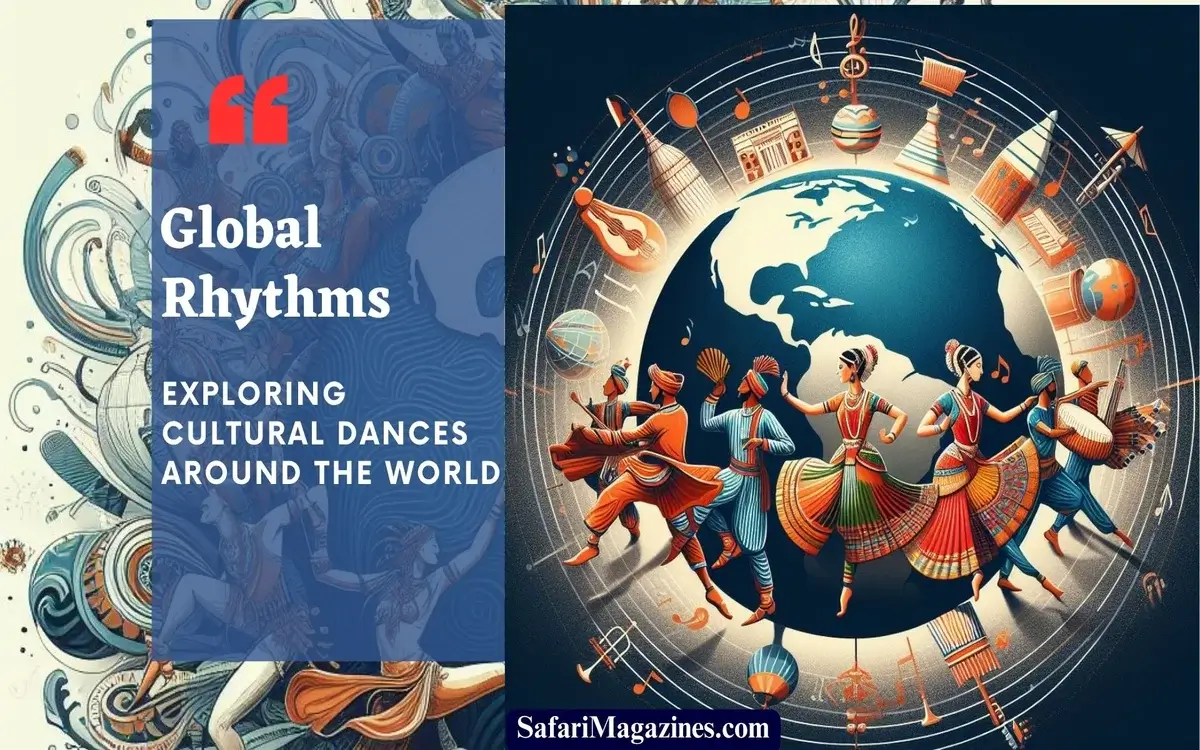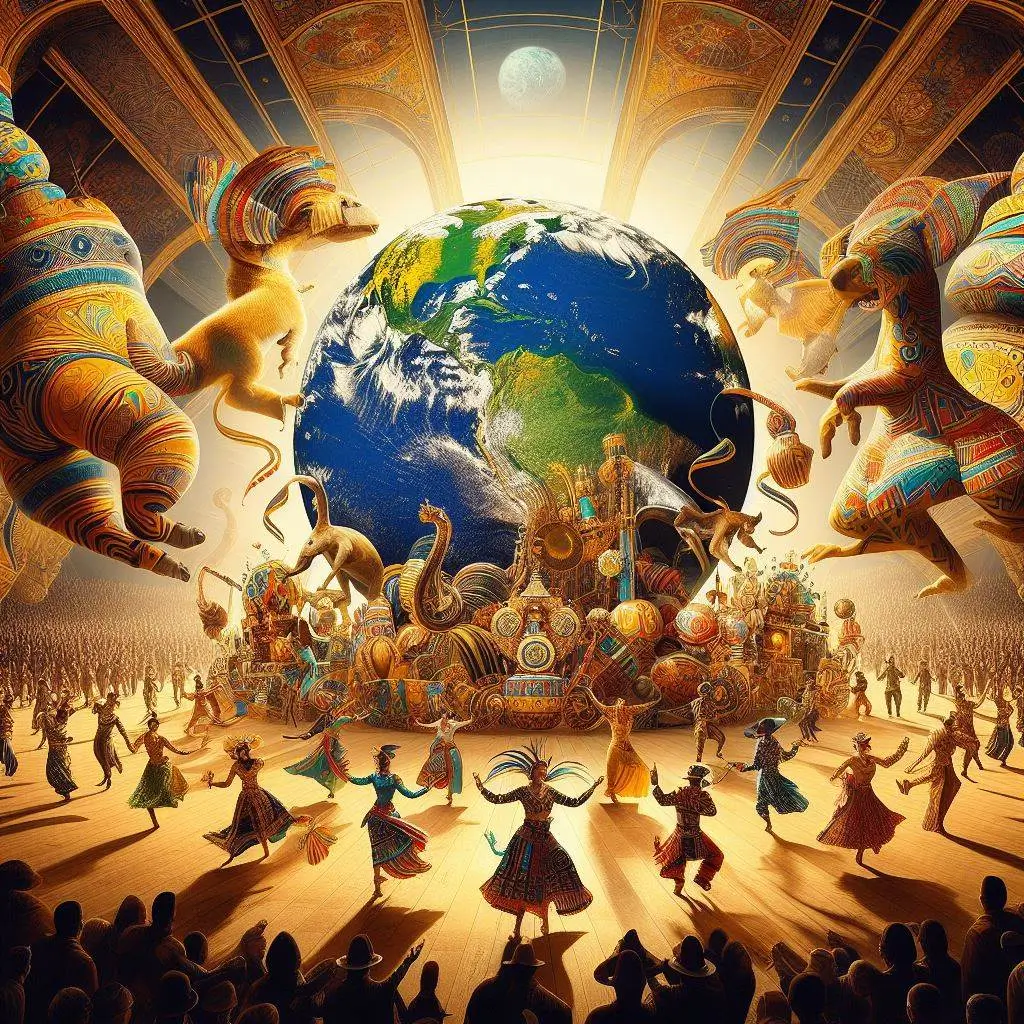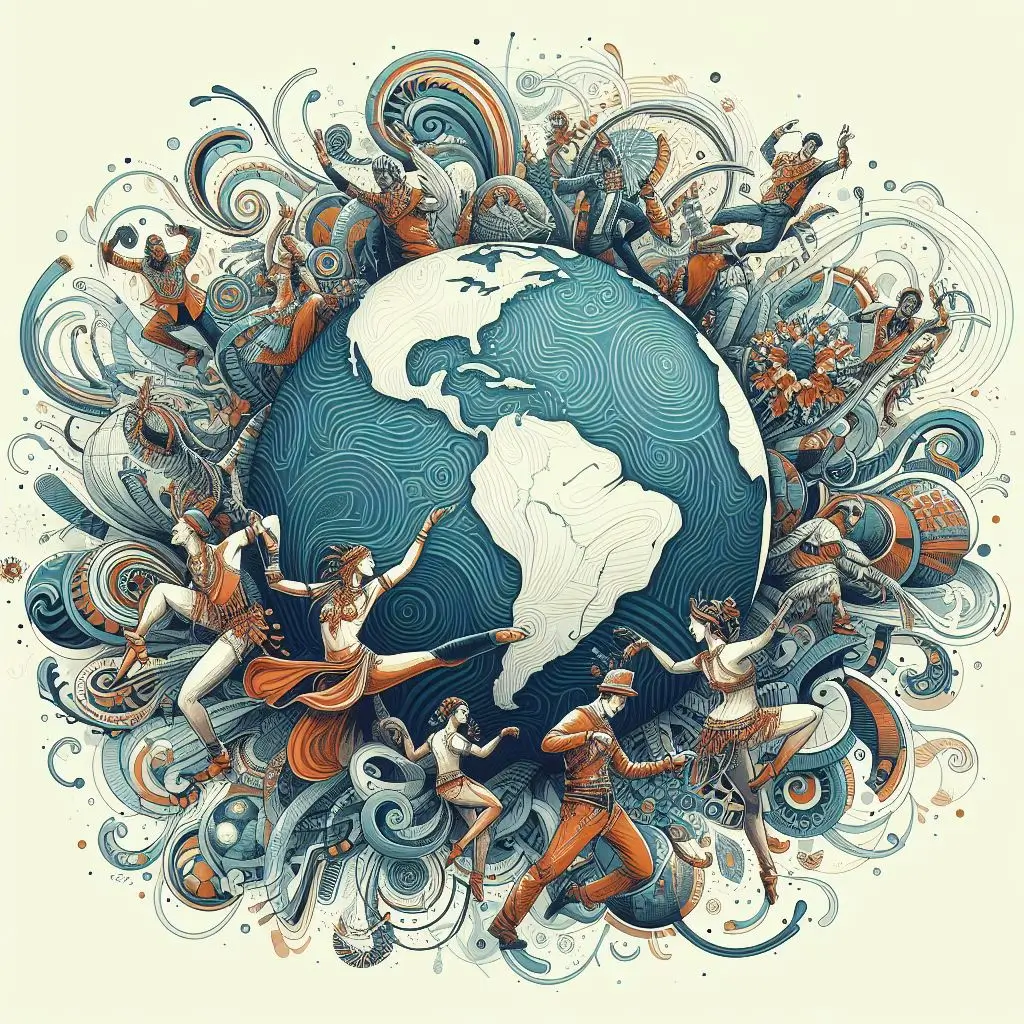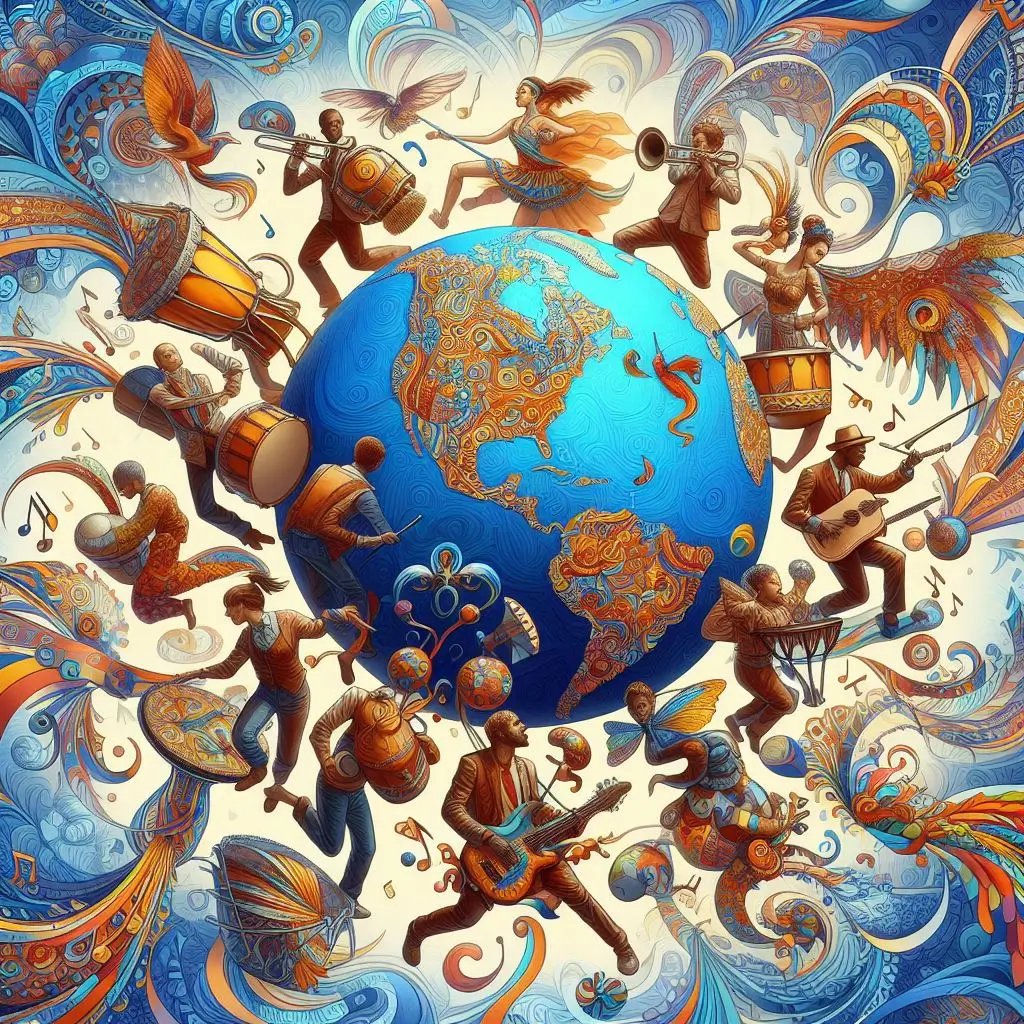
Cultural Dances Around the World, Exploring Global Rhythms. Dance is a universal language of expression that speaks to all people regardless of geography, language or ideology. Cultural dances are not just mere movements; they are embodiments of identity, tradition, and community. All over the world, from the tribal lands of Africa to the vibrant streets of Brazil, dance is a sacred thread that connects people to their roots and enhances the fabric of human civilization.
Table of Contents
ToggleCultural Dances: An Expression of Identity
Cultural dances are more than just performances; they are living manifestations of a community’s history, values, and beliefs. Passed down through generations, these dances serve as a tangible link to the past, preserving rituals, stories, and customs that define a people’s identity. Whether it’s the graceful movements of classical ballet or the rhythmic beats of the Maasai warrior dance, each step reflects a collective heritage.
A Global Tapestry of Dance Forms

Diversity is the hallmark of cultural dances, with each region boasting its unique styles, costumes, and music. From the flamenco of Spain to the Kathak of India, the world is a stage where every culture performs its own story. Whether it’s the intricate footwork of Irish step dance or the hypnotic twirls of the Sufi dervishes, cultural dances captivate audiences with their richness and diversity.
Cultural Dances and Social Cohesion Globally
In communities around the world, dance serves as a unifying force. It’s bringing people together in celebration, mourning, and everything in between. From weddings to religious ceremonies, cultural dances forge bonds that transcend social barriers, fostering a sense of belonging and togetherness. In a world often divided by differences, dance serves as a reminder of our shared humanity.
Continue reading: Global Rhythms: Exploring Cultural Dances Around the World
Impact of Globalization on Cultural Dances

Globalization has brought the world closer together, but it has also created challenges to traditional cultural practices. In an era of mass media and cultural homogenization, many indigenous dance forms struggle to survive. However, globalization has also sparked a renewed interest in cultural exchange, leading to innovative collaborations and hybrid dance forms that bridge the old and the new.
Preservation Efforts and Cultural Sustainability
Amidst the challenges of modernity, there is a growing recognition of the need to preserve and promote cultural dances. Governments, NGOs, and grassroots organizations are spearheading initiatives to safeguard intangible cultural heritage, including dance. So, through education, documentation, and community engagement, these efforts aim to ensure that future generations inherit a world rich in cultural diversity.
Notable Cultural Dance Festivals
Cultural dance festivals serve as vibrant showcases of artistic talent and cultural pride. So, from the Carnaval in Rio de Janeiro to the Diwali celebrations in India. These festivals attract participants and spectators from around the globe. By bringing together diverse cultures in a spirit of camaraderie and exchange, these events show the beauty and resilience of the human spirit.
Continue reading: Global Rhythms: Exploring Cultural Dances Around the World
The Power of Cultural Diplomacy through Dance

Cultural Diplomacy plays a crucial role in promoting understanding and cooperation between countries, especially in today’s interconnected world. Through cultural exchanges and dance performances, countries can bridge political divides and promote mutual respect and appreciation. Whether it’s a ballet troupe touring abroad or a traditional dance ensemble representing their country on the world stage, dance has the power to transcend boundaries and build bridges of friendship.
Health and Well-being Benefits of Cultural Dance
In addition to its cultural importance, dance also offers countless benefits for health and well-being. From improving cardiovascular fitness to boosting mood and cognitive function, dancing is a holistic form of exercise that nourishes the body, mind, and soul. So, in cultures where dance is an integral part of daily life, people enjoy not only physical vitality but also a deep sense of joy and connection.
Challenges and Opportunities of Cultural Dance
Despite its many benefits, cultural dance faces numerous challenges in the modern world. Accessibility issues, funding constraints, and changing social norms pose significant obstacles to the continued practice and promotion of traditional dance forms. However, with innovation and cooperation, there are also opportunities to use technology and social media to reach new audiences and preserve cultural heritage in innovative ways.
The Future of Cultural Dances
As we look to the future, cultural dance will develop through a blend of innovation and tradition. Some styles may disappear, but others will flourish by adapting to the times. By promoting creativity and inclusivity, we can keep cultural dances alive for generations to come, breaking down barriers and enhancing our collective human journey.
Continue reading: Global Rhythms: Exploring Cultural Dances Around the World
Case Studies: Success Stories in Cultural Dance Revival
Around the world, communities are uniting to revive endangered dance styles. From the Maori haka in New Zealand to flamenco in Spain, grassroots efforts are preserving ancient traditions for the future. So, with passion and dedication, these communities are creating a new legacy for cultural dance.
The Role of Media in Promoting Cultural Dances
In the digital age, Media is essential in showcasing the voices of cultural dancers and reaching audiences around the world. From viral videos on social media to documentary films and online tutorials, digital platforms offer unprecedented opportunities for cultural exchange and dialogue. Technology helps bring attention to diverse dance styles, encouraging more people to participate and appreciate these art forms.
Continue reading: Global Rhythms: Exploring Cultural Dances Around the World
Educational Significance of Cultural Dances
Cultural dances in schools provide a special chance to encourage cross-cultural understanding and empathy. By including dance in both curriculums and after-school programs, teachers can help students value diversity and develop a sense of global citizenship. Interactive activities like workshops and performances, allow students to learn more about diverse cultures and traditions around the world.
Read more:
- Discover the Popular Dances Around the World: A Comprehensive Guide
- Exploring Weird Wedding Traditions: Rituals of the Unconventional
Summary
In a world often divided by differences, cultural dances serve as a powerful reminder of our shared humanity. From the rhythmic drumbeats of Africa to the graceful movements of classical ballet, dance has the power to transcend boundaries, forge connections, and celebrate the beauty of diversity. Let us keep in mind that the true magic of dance is not only found in the steps, but also in the stories, customs and communities that traditional dances represent and we work to preserve and enhance them.
FAQs about the Cultural Dances:
Q1: Why are cultural dances important?
A1: Cultural dances are important because they serve as living expressions of a community’s identity, history, and values. They preserve traditions, enhances social cohesion, and promote cross-cultural understanding.
Q2: How can I get involved in cultural dance?
A2: There are many ways to get involved in cultural dance, from joining local dance groups to attending workshops and festivals. You can also explore online resources and tutorials to learn different dance styles from around the world.
Q3: What are some famous cultural dance festivals?
A3: Some famous cultural dance festivals include the Carnival in Rio de Janeiro, the Diwali celebrations in India, and the Notting Hill Carnival in London. These festivals attract participants and spectators from around the globe and showcase the richness and diversity of cultural dance traditions.
Q4: How can cultural dance benefit my health?
A4: Cultural dance offers numerous health benefits, including improved cardiovascular fitness, flexibility, and coordination. Dancing also boosts mood and cognitive function, promoting overall well-being and vitality.
Q5: What can we do to support the preservation of cultural dances?
A5: To support the preservation of cultural dances, you can participate in cultural events and festivals, support local dance groups and initiatives, and advocate for cultural education and awareness in schools and communities.
